Micajah and Wiley Harpe, Murderers of the Western Frontier
War creates monsters, and not all monsters go away when the war does. Some still fight for their lost cause, some fight for their own survival, and some fight because they’ve discovered they love nothing more than killing. This was the case with the Harpe brothers, men who ravaged the western frontier of the newly born United States.
Micajah and Wiley Harpe weren’t actually brothers, they were cousins. And their names weren’t Micajah and Wiley; they were Joshua and William. They probably weren’t even named Harpe, their family name was more likely Harper. Or maybe Harp, records were scanty back in those days. We don’t even know what year they were born. Joshua was probably born sometime around 1748, and William around 1750. Their fathers were a pair of Scottish immigrant brothers, a distinctly different breed from the early English settlers. Since this was before “the Highland Clearances” the Scottish in America were generally there by choice rather than fleeing persecution, and they retained a lot of loyalty to their mother country. John and William (the fathers of the cousins) had moved to North Carolina sometime in the early 18th century, and when the need arose they fought on the side of the Crown.
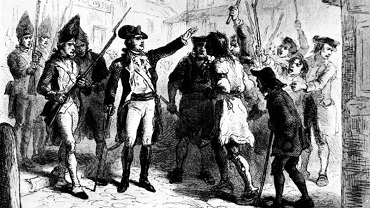
In the decades before the American Revolution, there were those in the colonies who chafed at their service to a king over the seas. Others saw opportunity, and by becoming favourites of the colonial administration gained the freedom to abuse their fellow settlers. In North Carolina the reins of power were held by a small group of officials who basically operated on a “tax farming” system, where they collected as much tax revenue for themselves as they could and then turned over the “official” levy to the Crown. This led to the rise of the Regulators, a group who promoted the revolutionary idea that the government follow rules and treat people fairly. Such ideas had to be crushed, of course, and the military soon began stamping out these “rebels” with the aid of local militias. John and William Harper, loyal servants of the Crown, were active members of these militias. And though the colonial governor did succeed in stamping out these “Regulators”, all he really did was ready the ground for the coming American Revolution.
When that revolution broke out, Joshua and William (by now in their 20s) were working as overseers on a slave plantation in Virgina. They tried to join the American Patriot side, but they were roughly rebuffed by men who remembered their fathers’ conduct during the Regulation wars (along with possibly the activities of the cousins themselves as young men). So instead they joined the “Tory Loyalists” in fighting for the British, just as their fathers had. This type of bitter local grudge was a lot more typical of the Revolutionary War than people like to remember. The leaders may have had high-minded ideals about the rights of man and the principles of good government, but for many on the ground it was a chance to even scores that had built up over decades. And for others, it was a chance to indulge their darkest impulses.
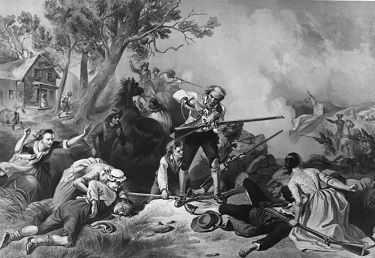
“Scorched earth” tactics against civilians had been part of the playbook used against uncooperative Native American for a long time, of course. It was only when the Loyalists and Patriots turned them on each other that they called them “war crimes”. Both sides were equally vicious, but the Tory gangs had an additional layer to their attacks. They were foraging on behalf of the British army, who had only the most tenuous of supply lines back home. So gangs like those of the Harper cousins would descend on isolated farms, strip them of all produce, rape and/or murder anyone they found there, and then burn the farms down. Of particular note was a raid where they kidnapped and raped three teenage girls, with a fourth girl being rescued by Captain James Wood of the local Patriot militia. This was part of a deliberate British strategy to weaken the revolutionary army by drawing their forces back home to protect the civilians. The Patriots committed their own share of atrocities, of course (Washington acquired the nickname of “Town-Destroyer” among the Iroquois for his habit of destroying their towns); but they heavily publicised the British crimes in order to win support for themselves from Europe and to undermine the image the British portrayed of themselves as benevolent colonial overlords.
The Harper cousins ranged across their old home state of North Carolina during the war, but they did also fight some “regular” battles as well. For example they fought under the command of Major Patrick Ferguson at the Battle of Kings Mountain in 1780. Ferguson was a British officer leading an army composed of American loyalists, which he had recruited from South Carolina. The Patriot militia were determined to attack and overwhelm these recruits before they could join up with the main British forces, so they organised a pursuit. When the Loyalists made camp on a ridge at King’s Mountain the Patriots surrounded them and launched a surprise attack. The Loyalists suffered heavy casualties trying to break out of the encirclement, including the death of Major Ferguson. Overall a quarter of the Loyalists were killed and over half of them were captured. It was a massive victory for the Patriots and a huge boost to their morale in South Carolina.
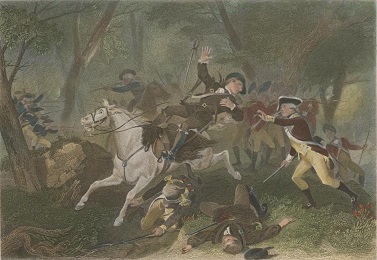
Either the Harper cousins managed to avoid capture during the battle, or they were among the five hundred prisoners who managed to escape afterwards. Either way they went on to continue their raids, and early in 1781 they took part in the Battle of Cowpens. This time they were the ones doing the pursuing, as part of a British army led by Sir Banastre Tarleton. Otherwise it was a surprisingly similar situation: the Patriot leader Daniel Morgan had gathered together a group of local militias and the British had decided to try to overwhelm him. However this time things turned out differently. Tarleton overestimated the strength of his men and marched through the night to catch up to Morgan. Morgan, on the other hand, accurately estimated that the bulk of his men were likely to break and so positioned them so that they could not retreat. He also positioned his men to encourage the British to overextend themselves and fall into a trap where they were outflanked by his more experienced troops. Once again the vast majority of the British and Loyalist forces were either killed or captured. It was a surprising victory for the Patriots, and one which set the tone for the remainder of the war. Some historians trace a direct line between this and the Battle of Yorktown six months later, where the Patriots finally won the American War of Independence.
Whether the Harper cousins were captured at Cowpens or not, they were free at the end of the War and continuing their raids against the civilians of the Carolinas. The Loyalists had allied themselves with several Native American tribes, and this area those allies had been the Chickamauga Cherokee. In the spring of 1781 the Harper cousins joined a Cherokee war party in a raid on the settlement of Bluff station. Later that year when General Cornwallis surrendered on behalf of the British, the Harpers (like many of their fellow Loyalists) transitioned into brigandry rather than surrender. [1] In 1782 they took part in the Battle of Blue Licks, the last Loyalist victory of the war. A raiding party composed primarily of Cherokee raided a Patriot settlement, and when the Patriot militia (which included the famous frontier explorer Daniel Boone) pursued they were led into an ambush. The militia were cut to ribbons. Boone escaped, but his son Israel was killed. It was a Pyrrhic victory for the raiders though, as it provoked the newly-formed US military into a response that would drive them over the Appachians and into what would one day be Tennessee.

There the Harper cousins settled into their new home of Nickajack, a town on the Tennessee River. Nickajack was a Native American town that grew in power because its headman, Turtle-at-Home, controlled the ferry crossing of the river. This ferry serviced the Federal Road running from Augusta in Georgia to Nashville in Tennessee, so it was a profitable operation. Though Turtle-at-Home was a Cherokee, the town of Nickajack was a cosmopolitan place home to both white outcasts like the Harpers and members of other Native tribes. In fact the name Nickajack was an Anglicization of the Cherokee word for “Coushatta Town”, after the tribe which had first settled at the crossing. As well as the crossing, the town also served as a staging area for attacks on white settlements back in the Carolinas, and the Harpers were enthusiastic participants in these raids.
It was during these raids that they acquired their “wives”. The first of these was a woman named Betsey Walker (or possibly Maria Davidson), [2] and the second was Susan Wood. Susan was the daughter of Captain James Wood, and the Harpers specifically targeted her as an act of revenge against her father for having shot William Harper during one of their encounters. Both women were kidnapped and forced into slavery in Nickajack. This slavery included rape by both men, combined with beatings and allegedly the killing of the two children the women bore during the time they were imprisoned at Nickajack. This torture seems to have thoroughly broken their spirits, as they would later accompany the men without question on their exploits.
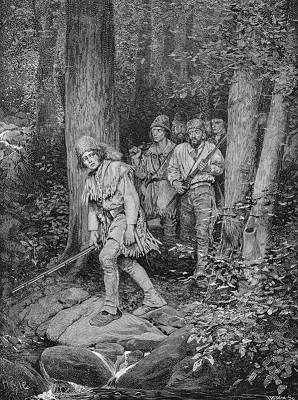
The Harper cousins were at Nickajack for twelve years, and left in 1794 along with most of the inhabitants when word reached them that a US Army expedition was on its way to eliminate the town. This had been prompted by the death of two specific settlers in raids from Nickajack, who just happened to be the sons of prominent military men. Only a hundred people were left in the town when the army arrived, and though they were reinforced by an army of rebel Cherokee it was not enough. They were defeated, and Nickajack was wiped off the map. Nowadays it lives on only as the name of a local lake and cave.
The Harpers made their way to Knoxville, Tennessee – at the time one of the roughest frontier towns in America. There they reinvented themselves as Micajah and Wiley Harpe, two brothers who bore no relation to Joshua and William Harper. With the aid of the “wives” they cleared a few acres of farmland and built themselves a log cabin about eight miles from Knoxville. This was a front for banditry, of course, and the things the cousins brought into town to sell bore little relation to what their farm ostensibly produced. Nobody cared. Knoxville was the type of town that had “seven taverns and no church”, and the Harpe Brothers fit right in.
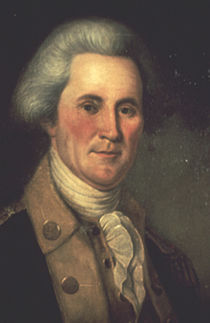
Allegedly one of their exploits in Knoxville, which was the state capital at the time, was to attempt a robbery of the governor’s mansion. This would have fit their pattern of vindictive attacks on former enemies, since the governor (John Sevier) had been a commander of the Patriots at King’s Mountain. They attempted to draw the guards away from the house by setting a fire at the stables attached to the local Indian Affairs office, but this failed. Some people did suspect them, but they managed to avoid any fallout from the event. In fact they were still accepted enough in the local community that Wiley was able to court Sally Rice, the daughter of a local farmer. They were married on the 1st June 1797 and she moved to the Harpe family farm. Of course the other two “wives” were still there, though after this they became Micajah’s sole “possessions”. They each gave birth to a child during this time, bringing the family at the homestead up to seven people.
Eventually in 1798 the Harpe Brothers pushed their luck too far when they tried their hands at horse thievery. They stole some horses belonging to a farmer named Edward Thiel, but he quickly realised they were the culprits and led a posse to the Harpe homestead. There he found enough evidence to prove their guilt, but the cousins themselves had headed off into the Cumberland Mountains to find somewhere to sell the horses. Thiel led the posse on their trail, and eventually overtook and captured them. On the return journey to Knoxville they managed to escape into the brush, but since they escaped on their own horses and Thiel had got his back the posse decided not to pursue them.
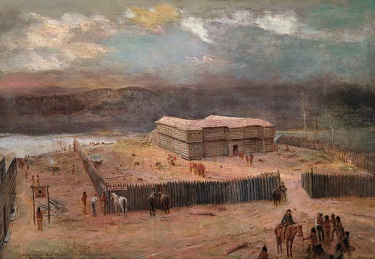
The cousins ended up in a bar on the outskirts of Knoxville called Hughes’ Rowdy Groggery, where they got to drinking with a man named Johnson. After that they met up with their wives children and decided to quit Knoxville for pastures new. A week later Johnson’s corpse was fished out of the Holstein River. He had been murdered, and then after death his stomach had been cut open and filled with stones in order to weigh him down so the body wouldn’t be found. The stones had fallen out, which was the only reason he had floated to the surface. Poor Hughes, the owner of the Rowdy Groggery, was blamed and run out of town as a result. However the manner in which the body was disposed of would turn out to be a trademark of the Harpe Brothers, meaning that he was more likely the first victim of what would turn out to be a murder spree by Micajah and Wiley.
The Harpes headed north from Knoxville, heading towards Kentucky. On the way they passed through the Cumberland Gap, where they met a preacher named Lambuth. They robbed him, but when they found out he was a “man of the cloth” they let him live. Less lucky was a peddler named Peyton who they killed and robbed a few days later. They murdered several other people on the trail, including a man named Thomas Langford who made the mistake of buying them breakfast at a public house near the town of Crab Orchard. Since the Harpes then knew that he had money, they murdered him a short way down the trail. His body was discovered a few days later, and since he had been seen leaving with the Harpes there was soon a posse on their trail once more. The two men and three women were arrested and taken to the jail at Stanford on Christmas Day, 1798. All three women were heavily pregnant at the time.
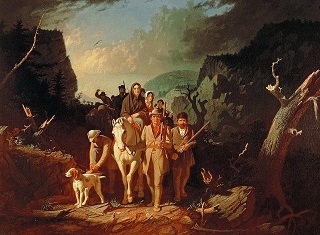
The Harpes were indicted on the 4th January. Since Langford’s corpse had been badly mutilated, most of the evidence was related to identifying him. After the indictment the party of five were transported to Danville and put into the county jail. Maria (aka Betsey) gave birth to a son at the start of February, and a month later Susan gave birth to a daughter. A few days later Micajah and Wiley escaped, leaving their wives and children behind. So Sally was without her husband when she had her first son a couple of weeks later. Officially the cousins cut a hole in the wall of the jail and escaped through it; unofficially they may have bribed one of the jailers. In their absence the women were put on trial but eventually acquitted and set free.
Shortly after the Harpes escaped the bodies of two of their victims in the Cumberland Gap were discovered. This put even more pressure on John Ballanger, the man authorized by the governor of Kentucky to lead the pursuit. He tracked them with dogs and actually managed to find the cousins, but they escaped into the underbrush. He pursued them around the area for several days, during which they murdered the child of a local man who had the bad luck to run into them. This led the governor to issue a $300 reward for their arrest, with the following descriptions:
MICAJAH HARP alias ROBERTS is about six feet high-of robust make, and is about 30 or 32 years of age. He has an ill-looking, downcast countenance, and his hair is black and short, but comes very much down his forehead. He is built very straight and is full fleshed in the face. When he went away he had on a striped nankeen coat, dark blue woolen stockings, leggins of drab cloth and trousers of the same as the coat.
WILEY HARP alias ROBERTS is very meagre in his face, has short black hair but not quite so curly as his brother’s; [3] he looks older, though really younger, and has likewise a downcast countenance. He had on a coat of the same stuff as his brother’s, and had a surtout coat over the close-bodied one. His stockings dark woolen ones, and his leggins of drab cloth.

The Harpes managed to slip away when they headed north, but Ballanger thought they had headed south. They were part of a general exodus of brigands from Kentucky, prompted by a vigilante crackdown across the state. Grabbing a few opportunistic murders on the way the cousins made their way to Cave-In-Rock, home to the Mason gang. This was where they had arranged to meet up with Susan, Sally and Maria. And, for whatever reason, the women had made their way there along with the children. The Harpes briefly worked with Samuel Mason and his gang as river pirates, but their vicious and unpredictable nature clashed with the discipline that Mason (a former military officer) tried to instill in his gang. When the vigilante “Exterminator” group forced the gang to abandon their hideout in the cave, the cousins weren’t allowed to accompany them to their new hideout. So the Harpes decided instead to head back home to Knoxville.
Their first recorded victim in Knoxville was Isaac Coffey, a young man that Micajah dragged off his horse and banged against a tree headfirst until he died. Two days later the body of a man named William Ballard was found in a river. He had been cut open and filled with rocks, proof to those who paid attention that the Harpes were back in town. So it wasn’t a surprise to James and Robert Brassel when two men asked them to join a posse hunting the Harpe Brothers. They were more surprised to then be accused of being the Harpe Brothers and tied up. Robert escaped and came back with help, only to find his brother murdered. Of course the two men who had asked them to join a posse were actually themselves the Harpes.
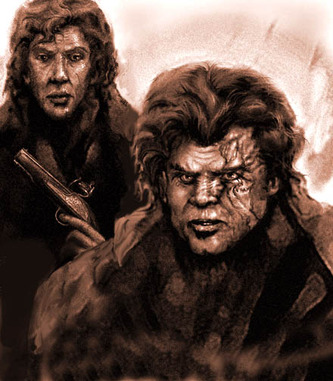
The first place they stopped belonged to a man named James Tompkins, who they convinced they were Methodist preachers. For whatever reason they decided not to kill him, and Micajah even made him a gift of some gunpowder before they left. He gave them directions to the farm of Silas McBee, a local justice of the peace who they definitely did intend to kill for aiding the work of the vigilantes. Silas kept dogs, though. And those dogs managed to detect and drive off the intruders as they sneaked up on the house. As they retreated they came upon a house belonging to the Stegall family, where they decided to ask for shelter for the night.
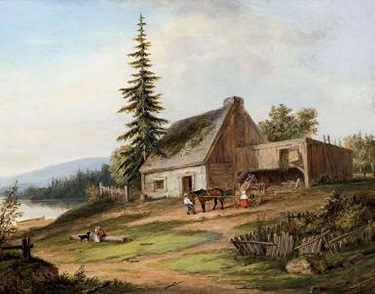
Moses Stegall was away from home, but his wife let the cousins stay in the loft. It was already playing host to a local surveyor named Mr Love, but he was apparently given to snoring so the cousins cut his throat so that they could sleep undisturbed. The next morning they asked Mrs Stegall for breakfast, but she was busy looking after her infant son who was poorly. She agreed to cook breakfast if the Harpes could quiet the child, which they did to an extent that impressed her greatly. When she went to check on the babe though she found out that they had done this by slitting his throat. Before she could scream Micajah had murdered her too; and then the cousins sat down to their breakfast. On their way out they set fire to the house, hoping to cover their tracks. [4]
The cousins had another reason for setting fire to the house: they hoped to draw Silas McBee to it so that they could kill him. Two would-be good samaritans did fall victim to their ambush, but Silas managed to avoid it. He was at the house when Moses Stegall returned home and found out what had happened. Silas and Moses soon organised a posse determined to deal out bloody and final vengeance to the two men who had killed so many. The group of six soon picked up the trail of the Harpes, aided by the corpses of two dogs they found killed by the side of the road. They managed to sneak up on the Harpe camp, finding that the Harpes had once again reunited with their wives. It was a short-lived reunion. When the men charged the camp the cousins fled; Micajah down the trail on a horse and Wiley into the wilderness on foot.
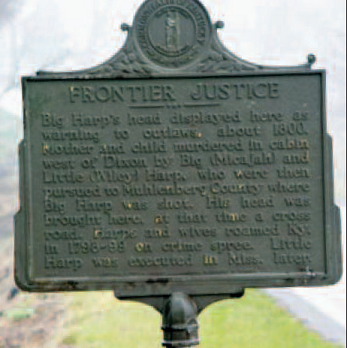
The men decided that it would be easier to catch Micajah, so they left two men behind to take the women into custody while the other four pursued him. They caught up with him two miles down the trail and John Leiper, who was leading the charge, had a stroke of luck when Micajah’s rifle misfired. Leiper’s did not, and he caught Micajah in the chest. The Harpe fled again, but he was in no condition to escape and he was soon dragged from his horse and lay bleeding out on the trail. Some stories say that he confessed to twenty murders, but that the only one he regretted was killing his own child. Moses Stegall finished him off; either by shooting him in the heart and cutting off his head, or by not bothering to shoot him first. They hung it at a nearby crossroads as a warning to all outlaws.
The three women were taken to the jail in Russelville and held for trial once again. Though there were threats to lynch them, in the end they were found not guilty once again. Sally went home to her father, while the other two women stayed in Russelville. All three eventually remarried (though whether Susan and Maria were actually married to Micajah is a matter of definition). They lived relatively respectable lives, or as respectable as anyone was on the wild frontier.
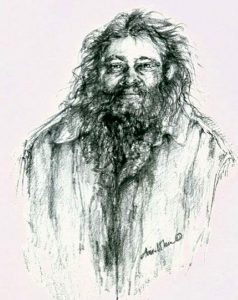
Wiley Harpe managed to get away, and eventually made his way to Spanish Louisiana. There he was reunited with Samuel Mason’s gang, who were working as highwaymen over the border in the US territory of Mississippi. Without his brother on the scene he managed to convince them to let him rejoin the gang under the alias of “Peter Setton”. They were convinced that they could avoid capture by operating outside Louisiana, but they were wrong. In 1803 they were arrested by the Spanish government, and after an investigation found twenty human scalps in Mason’s luggage the authorities decided they had enough evidence to extradite the gang (including Wiley) to America to stand trial.
While Mason and the gang were being transported up-river to stand trial, they managed to escape and made it to the shore of the Mississippi. Either Mason was shot in the escape and died after they made camp or his fellow escapees turned on him and killed him because they had found out that there was a $2200 bounty on his head. Either way Wiley and another gang member named Peter Alston detached his head and took it up the river to Natchez to claim the bounty. However their horses were recognised as stolen, and then after they had been arrested a witness identified “Peter Setton” as Wiley Harpe. Wiley and Alston managed to escape from jail but were swiftly recaptured and just as swiftly executed. Their heads were, like Micajah’s, put on display as a reminder to all that the outlaw trail ridden by the Harpe Brothers only ever had one destination.
Images via wikimedia except where stated.
[1] Most of the Loyalists who either could not accept the United States or (more commonly) had been too visibly Loyalist to be accepted by it wound up emigrating north to Canada, which remained under British control. There they formed the majority of English-speaking Canadians, and in fact modern Canada descends in large part from that Loyalist tradition.
[2] Both names are given in various places, and it seems that either one or both was an alias she used.
[3] Some sources describe Wiley as having ginger hair, so either they or the governor were mistaken.
[4] Since there were no living witnesses to this scene other than the cousins themselves, it’s possible that this isn’t exactly how it really played out. It is a definite fact that they murdered everyone in the house including the four month old baby.
[5] If you know who the artist or the original source is, let us know.
